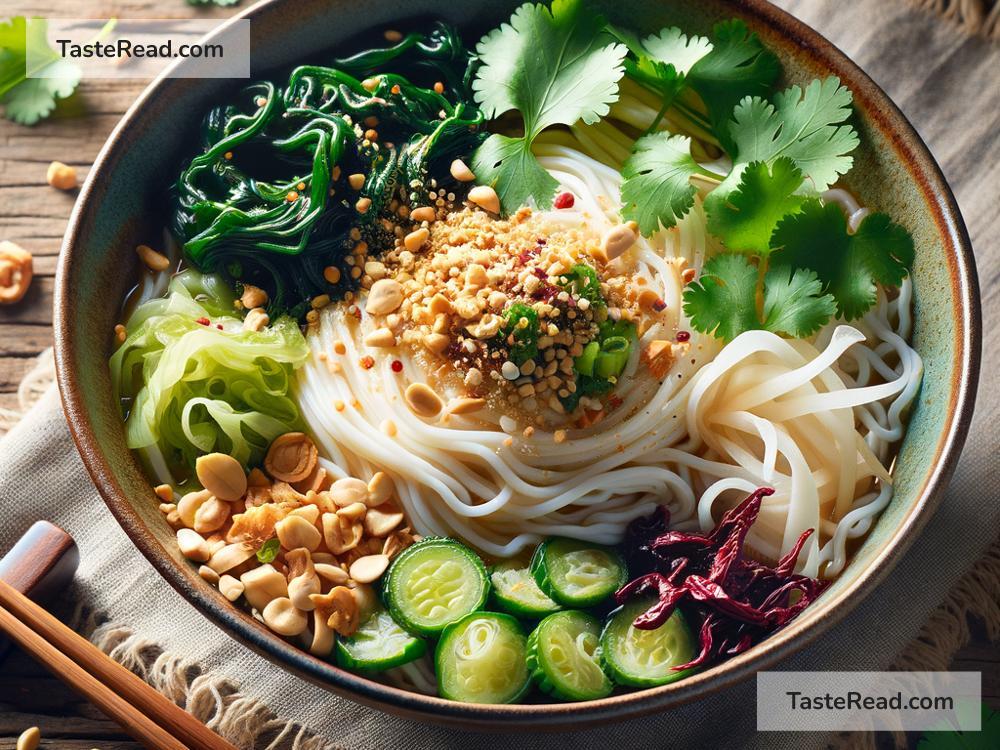Unpacking the Traditions of Burmese Shan Noodles: A Journey into Flavor and Culture
Nestled in the heart of Southeast Asia, Myanmar, formerly known as Burma, is a treasure trove of culinary delights. Among the various dishes that have captured the hearts of locals and foreigners alike are the Burmese Shan noodles. This simple yet flavorful dish is not just a testament to the country’s rich culinary traditions but also a window into its diverse culture. Let’s embark on a journey to explore the origins, ingredients, and significance of this beloved Burmese dish.
The Origins of Shan Noodles
Shan noodles originate from the Shan State in eastern Myanmar, an area known for its picturesque landscapes and vibrant ethnic diversity. The Shan people, one of the country’s largest ethnic groups, have a distinct culture and cuisine that significantly contributes to Myanmar’s culinary landscape. Shan noodles, or “Shan khauk swe,” as they are known locally, are a reflection of the Shan people’s love for simple, hearty, and flavorful food.
This dish traditionally combines rice noodles with a variety of ingredients such as marinated chicken or pork, pickled vegetables, and a special sauce that is the heart of the dish. What makes Shan noodles stand out is their unique preparation and the intricate balance of flavors that come together in every bite.
Ingredients and Preparation
At its core, the Shan noodle dish is incredibly versatile, allowing for variations in ingredients and preparation methods. However, the essence of the dish revolves around a few key components:
- Rice Noodles: These are the backbone of the dish, providing a soft and slightly chewy texture that perfectly complements the other elements.
- Meat: Chicken or pork is commonly used, marinated and cooked to perfection, adding a rich depth of flavor.
- Sauce: This is what truly defines Shan noodles. The sauce is a mix of garlic, tomatoes, fermented soybean paste, and various spices, creating a savory, umami-packed taste that is utterly addictive.
- Pickled Mustard Greens: These add a crunchy texture and a tangy flavor that cuts through the richness of the sauce.
- Garnishes: A sprinkle of chopped green onions, cilantro, and crushed peanuts is often added on top for additional flavor and texture.
Preparing Shan noodles is an art form that has been passed down through generations. The process involves carefully balancing the flavors to achieve the perfect harmony between salty, sour, spicy, and savory. It’s a reflection of the Shan people’s culinary prowess and their ability to create dishes that are both comforting and exciting to the palate.
More Than Just a Dish: The Cultural Significance
Shan noodles are more than just a popular dish in Myanmar; they are a symbol of the country’s rich cultural tapestry. Sharing a bowl of Shan noodles is a communal experience, often enjoyed with family and friends, fostering a sense of unity and belonging. This dish is a staple at local eateries, street food stalls, and household gatherings, highlighting its integral role in Myanmar’s social and culinary scenes.
The popularity of Shan noodles has also crossed borders, introducing people around the world to the flavors of Myanmar and the traditions of the Shan people. It serves as a culinary ambassador, showcasing the diversity and richness of Burmese cuisine to a global audience.
Embracing Tradition and Innovation
While tradition plays a significant role in the preparation of Shan noodles, there’s also room for innovation. Chefs and home cooks alike enjoy experimenting with new ingredients and techniques to put their own spin on this classic dish. From adding different types of meat or vegetables to experimenting with the sauce’s flavor profile, the possibilities are endless. This openness to innovation ensures that Shan noodles continue to evolve while still honoring their traditional roots.
In Conclusion
Burmese Shan noodles encapsulate the essence of Myanmar’s culinary tradition — simple ingredients brought together with skill and passion to create a dish that is hearty, flavorful, and deeply satisfying. It’s a celebration of the country’s diverse culture and the culinary prowess of the Shan people. Whether you’re enjoying a bowl in the bustling streets of Yangon or cooking it at home, Shan noodles are a culinary journey that promises to captivate your taste buds and leave you yearning for more.
Discovering the story behind Shan noodles offers us a glimpse into the heart of Myanmar, inviting us to appreciate the beauty of its culture and the warmth of its people. So, the next time you savor this delightful dish, remember that you’re not just tasting noodles — you’re experiencing a rich tapestry of history, tradition, and community.


